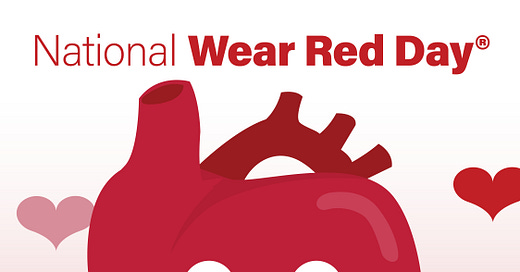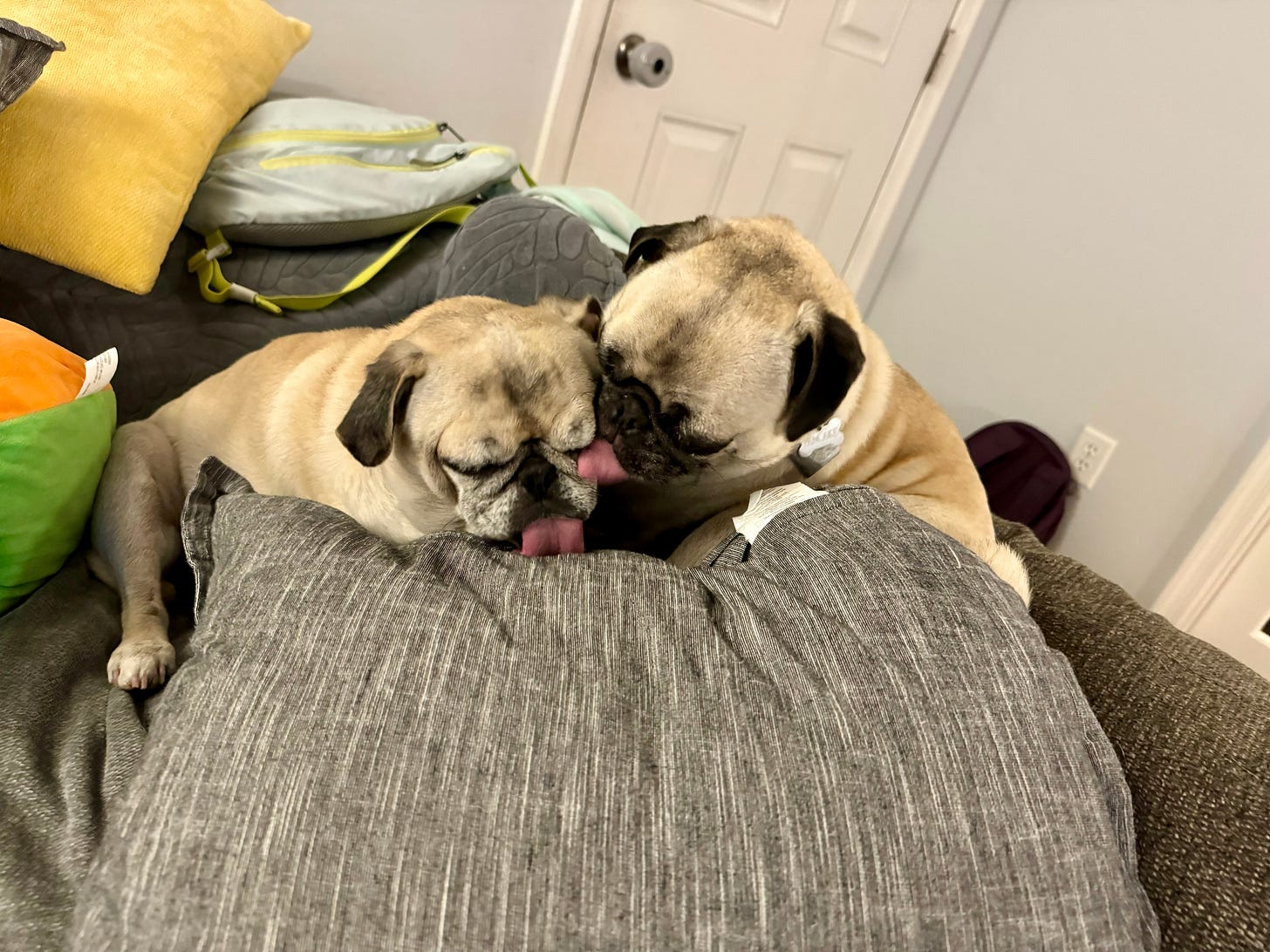February is heart health awareness month
Do campaigns like "Go Red for Women" actually work? ❤️💔
February is heart health awareness month. One of the most well-known annual public health campaigns in the United States is the American Heart Association’s Go Red For Women™ campaign. This effort to raise awareness of the fact that a staggering 44% of women living in the United States have some form of heart disease.
Go Red For Women™ now runs alongside other cardiovascular disease awareness efforts like the federal government’s National Wear Red Day®, which has a cute little heart mascot you can share on social media alongside #OurHearts.
If nothing else, heart health awareness month is an excuse for me to show you this very well done (imho) Go Red For Women™ public service announcement directed by and starring Elizabeth Banks.
The video uses a humor appeal to exemplify how a working mom, including a fairly young one like Banks in 2012, can still be susceptible to a heart attack. It pokes fun at women’s propensity to minimize their own health in order to provide for everyone else in the family. Yet, the reality is that this comedic PSA is not too far afield from many mom’s daily lives. Humor can help gain our attention, especially for topics that we might otherwise avoid. As such, it may have been an effective tactic for Banks and the American Heart Association to use to get attention to the ill effects of women’s stress on their heart health.
Do campaigns like this actually raise awareness? Go Red For Women™ launched in 2004 and large nationally representative surveys show that, after its launch, women’s awareness of cardiovascular disease risk and symptoms has increased. In 1997, only 30% of women contacted in the survey knew that cardiovascular disease is the number one killer of American women; in 2009, that percentage had increased to 54%.
Another study looked at U.S.-based Google searchers for terms related to women’s heart health and the Go Red For Women™ campaign during February, compared to other months, from 2004 to 2019. Across these 15 years of data, the researchers found that the relative search volume of “Go Red for Women” in February increased, on average 494%, ranging from 211% to 789%. That is, even in the least “effective” years of the campaign, more than twice as many searches as normal were conducted online for heart health information.
Yet, there is more work to be done, from a health communication perspective. A survey of young women ages 15-24 showed that more than half felt they were not adequately informed about cardiovascular disease, including about heart diseases and strokes.
One approach to increasing awareness of heart disease, generally, and among young people, specifically, is to integrate heart health storylines into popular entertainment storylines. This is an endeavor known as entertainment education.
Grey’s Anatomy has had many heart health/heart disease storylines. But it has twice had notable episodes about stress cardiomyopathy, also known as broken heart syndrome. In 2006, it was an episode on a married woman who is admitted to the hospital every year on the same day, which (spoiler alert) turns out to the be the anniversary of the death of her secret lover. A 2020 episode of the show also involves a resident suffering the same condition after drama with his best friend and his boyfriend.
Entertainment storylines with health information can help raise awareness and encourage prevention efforts by showing relatable models practicing target behaviors and transporting audiences into the storylines, which makes it less likely they will immediately get defensive and counter-argue against the suggested health behaviors.
Across these efforts—cute heart mascots, hashtags, women in the news wearing red dresses, and Grey’s Anatomy storylines—the fact is that more people need both the information and the motivation to protect their heart health. A whopping 80% of cardiovascular disease (which includes heart disease, heart attacks, and strokes) is preventable. There IS something you can do, be it exercise, nutrition, stress reduction, or medications for certain conditions. If you take these actions, post them on social media to help others learn and feel motivated to join you in a walk or meditation session, too.





